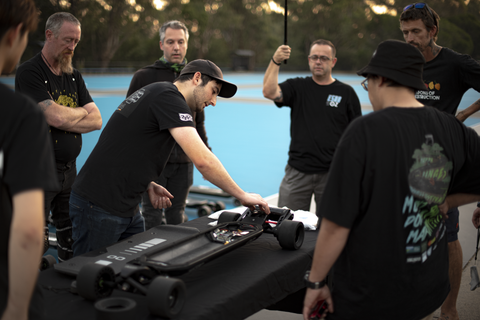So you’re eyeing your first electric skateboard. Good call.
Before you get lost in battery stats, promo vids, and influencer hype, here’s what actually matters. This guide breaks down how to choose a board that suits your terrain, speed goals, riding style—and doesn’t leave you with buyer’s regret.
1. Know Your Terrain
-
Street
Stick to smooth roads? You want a stiffer deck with street wheels. You’ll get better carving, more control, and a big boost in range thanks to lower rolling resistance. -
Mixed
Expecting patchy tarmac, cracks, or a bit of gravel? Look at mid-flex decks or suspension setups. Bigger, softer wheels help too. -
Off-road
You’ll need a proper all-terrain setup—oversized tyres, flex or suspension, and more ground clearance. If you’re choosing a board with an under-mounted battery, make sure it can clear debris. Top-mount packs are safer in the bush.
2. Speed and Power
- Boards range from 25–35 km/h (15–20 mph) commuters to full-blown 60+ km/h (37+ mph) machines.
- Power = torque and braking. Good for hills. But it also means faster battery drain.
- Be cautious of budget boards claiming big speeds—they usually can’t sustain it, and they tend to use cheap trucks that get sketchy fast (hello, death wobbles).
3. Range Isn’t Everything
- Bigger battery = heavier board. Efficiency matters more than size alone.
- Want range? Look for gear drives, smaller motors, and street wheels. They’ll sip power rather than guzzle it.
- Battery quality matters. Molicel and other premium cells hold performance deep into the ride. Cheap cells start strong, then fade fast.
- Always ask for real-world range under load. Heavier riders, hills, and aggressive riding cut claimed numbers quickly.
4. Gearing and Drivetrains
- Belt drives are flexible. You can swap pulleys to change gear ratios—go smaller for more torque and hill-climbing, or larger for more top speed. It’s a simple, effective way to tune your ride.
- Gear drives are fixed. You’ll get a sealed, low-maintenance setup with better efficiency and clearance, but you’re locked into one ratio—what you buy is what you ride.
- Neither is better across the board. Choose based on how you ride and whether you value tuning flexibility or long-term reliability.
5. Stability and Handling
- Want to go fast? Then flexy decks and DKP trucks aren’t your friend. They get unstable quick.
- Speed boards tend to suck at carving unless well tuned.
- There’s no perfect board—but some come close. Know your roads. Know your style.
- For low-speed carving on smooth roads: DKP, TKP, or well-set-up RKP trucks.
- For higher-speed carving on rough roads: RKP or channel trucks with large wheels.
- Tuning your trucks matters. Good bushings (like Riptide), proper washers, and the right shape (barrel/cone) can change everything.
6. Build Quality
- Avoid anything that looks bolted together from off-the-shelf parts.
- Look for:
- Custom enclosures
- Integrated wiring
- CNC billet components
- Vibration damping
- Clean, professional assembly
These things aren’t just cosmetic—they affect safety, durability, and ride feel.
7. Support and Service
- Good brands offer:
- Spare parts
- Real tech support
- Knowledgeable staff
- Avoid faceless marketplaces. When something breaks—and it will—you’ll want someone who understands the board they sold you.
8. What to Avoid
- Boards under $1500 AUD ($970 USD) usually aren’t worth it long-term.
- Watch out for:
- Vague specs
- Conflicting reviews
- Fancy lighting and gimmicks over core performance
If the spec sheet leads with headlights and a phone app but not trucks, ESCs or battery cells—walk away.
Final Tip
If you want something fast, smooth, and reliable, it’s probably not mass-produced. The best boards come from small teams that ride, race, and engineer what they build. You’ll feel it in the first 100 metres.
Radium Performance® builds for that feeling.


